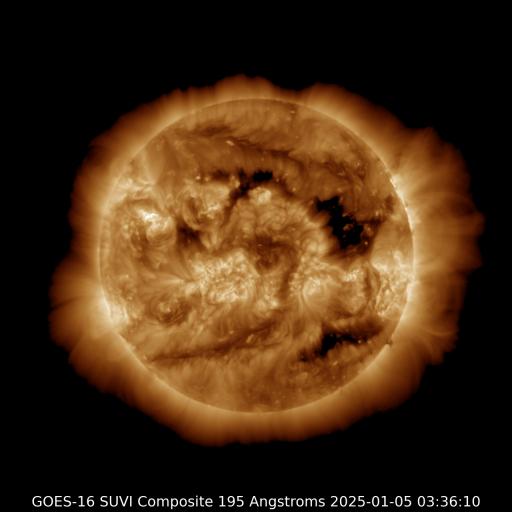Viewing archive of Saturday, 20 June 2020
Daily bulletin on solar and geomagnetic activity from the SIDC
Issued: 2020 Jun 20 1230 UTC
SIDC Forecast
Solar flares
Quiet conditions (<50% probability of C-class flares)
Geomagnetism
Quiet (A<20 and K<4)
Solar protons
Quiet
| 10cm flux | Ap | |
|---|---|---|
| 20 Jun 2020 | 069 | 007 |
| 21 Jun 2020 | 069 | 007 |
| 22 Jun 2020 | 069 | 007 |
Bulletin
There is no active region on the visible Sun. No B or brighter flares in the past 24 hours, none expected.
No Earth-directed Coronal Mass Ejections (CMEs) were observed in available coronagraphic imagery.
The greater than 10 MeV proton flux was at nominal levels in the past 24 hours, and is expected to stay at nominal levels in the next 24 hours.
Solar wind speed near Earth has remained between 300 and 350 km/s in the past 24 hours. The Interplanetary Magnetic Field ranged between 1 and 7 nT.
Quiet to unsettled geomagnetic conditions were observed locally (K Dourbes between 0 and 3) and Kp ranged between 0 and 2 in the past 24 hours. Similar conditions expected for the next 48 hours.
Today's estimated international sunspot number (ISN): 000, based on 25 stations.Solar indices for 19 Jun 2020
| Wolf number Catania | 000 |
| 10cm solar flux | 069 |
| AK Chambon La Forêt | 011 |
| AK Wingst | 006 |
| Estimated Ap | 005 |
| Estimated international sunspot number | 000 - Based on 27 stations |
Noticeable events summary
| Day | Begin | Max | End | Loc | Strength | OP | 10cm | Catania/NOAA | Radio burst types | |
|---|---|---|---|---|---|---|---|---|---|---|
| None | ||||||||||
Provided by the Solar Influences Data analysis Center© - SIDC - Processed by SpaceWeatherLive
All times in UTC
Current data suggests there is a moderate possibility for aurora to appear at the following high latitude regions in the near future
Gillam, MB, Yellowknife, NTCurrent data suggests there is a slight possibility for aurora to appear at the following high latitude regions in the near future
Edmonton, AB, Iqaluit, NU, Saskatoon, SK, Whitehorse, YTNuuk
Juneau, AK
Latest news
Latest forum messages
Support SpaceWeatherLive.com!
A lot of people come to SpaceWeatherLive to follow the Sun's activity or if there is aurora to be seen, but with more traffic comes higher server costs. Consider a donation if you enjoy SpaceWeatherLive so we can keep the website online!

Latest alerts
05:15 UTC - Hemispheric Power Index
The OVATION model predicts the Hemispheric Power Index to reach 50GW at 06:02 UTC
00:55 UTC - Coronal hole
A southern hemisphere coronal hole is facing Earth. Enhanced solar wind could arrive in ~3 days
Monday, 7 April 2025
20:45 UTC - Geomagnetic activity
Active geomagnetic conditions (Kp4) Threshold Reached: 20:39 UTC
17:33 UTC - Hemispheric Power Index
The OVATION model predicts the Hemispheric Power Index to reach 51GW at 18:18 UTC
Space weather facts
| Last X-flare | 2025/03/28 | X1.1 |
| Last M-flare | 2025/04/05 | M1.0 |
| Last geomagnetic storm | 2025/04/06 | Kp5 (G1) |
| Spotless days | |
|---|---|
| Last spotless day | 2022/06/08 |
| Monthly mean Sunspot Number | |
|---|---|
| March 2025 | 134.2 -20.4 |
| April 2025 | 151.3 +17.1 |
| Last 30 days | 135.2 -4.5 |




